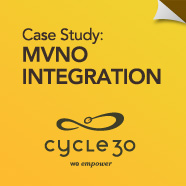By: Becky Bracken

Keeping your customers happy can be an expensive proposition. But happy customers, and the ability to know what makes customers happy, is the key to an operator's ability to elevate service beyond a commodity and retain customers as a result. With the rollout of LTE networks, customer education and troubleshooting of LTE devices has become exponentially more complex, costly, and created an enormous amount of confusion for their customers. The opportunity for operators that are able to deliver a high quality, consumer-centric, transparent service is huge. The cost on the operator side of mismanaging LTE rollouts could rack up losses into the millions.
In specific terms, LTE data service issues require tier 2/3 technicians and take hours to resolve. According to JDSU, teams of tier 2/3 technicians providing data troubleshooting for a mere .1 to .5 percent of subscribers monthly, and could cost a medium- to large-sized operator millions each year. In order for operators to realize the revenue promise of LTE, support costs must be managed through clear communication and even education.
With exploding smartphone uptake and data traffic, operators are rushing to deploy LTE networks. In fact, after trailing behind the EU 3G build-out, all four leading U.S. mobile operators will have commercial LTE available by the end of 2013, years ahead of previous projections. And now that the 4G, LTE iPad has hit the scene, customers will be clamoring for the new gadget that's boasting its super, lightning-fast connection. But, the reality of 4G is lagging significantly behind the perception of 4G. As a member of Pipeline's staff put it, "I think I was on 4G on a drive to Michigan, once." He put an emphasis on "once."
According to Maravedis' 4G Subscriber Forecast, the 35 commercial LTE networks today account for approximately 6.25 million LTE subscribers worldwide. "Maravedis anticipates that 469 million LTE subscribers will be active by 2016 of which 25 percent, or 118 million, will be TD-LTE users and the rest (75 percent or 350 million) will be FDD-LTE," Cintia Garza, 4GCounts team leader said.


Operators delivering data over LTE are experiencing the following pains, according to JDSU:
- Verifying new LTE network element interoperability to minimize service disruption
- Monitoring LTE QCI to verify data throughput to subscribers paying for a premium service
- Introducing and troubleshooting new data services and data-capable smartphones
- Identifying network element configuration errors impacting data services
- Ensuring delivery of seamless service irrespective of whether customers are on 2/3G or LTE networks
- Identifying rogue users who consume huge amounts of bandwidth and diminish service quality for other customers
- Rapidly identifying simple issues, such as misspelled APNs, resulting in fewer escalations to tier 2/3 resources
"As bandwidth itself becomes a commodity enabler, the real value moves to the services, their quality and the experience that customers expect," Miguel Carrero, director, WW Actionable Customer Intelligence, Communications, Media & Entertainment, HP Enterprise Services said. "This change also requires adjustments to customers' perception. Customers need to adopt the notion of paying for the level of services and the quality of experience that they need."









